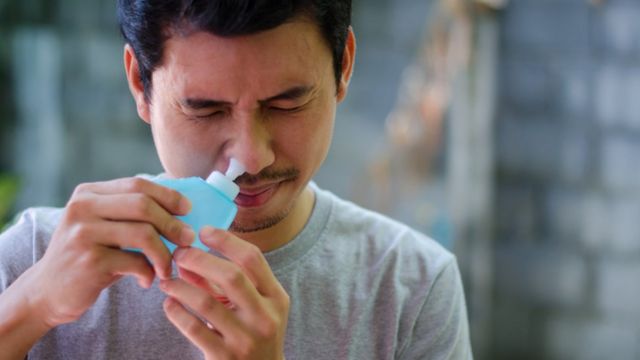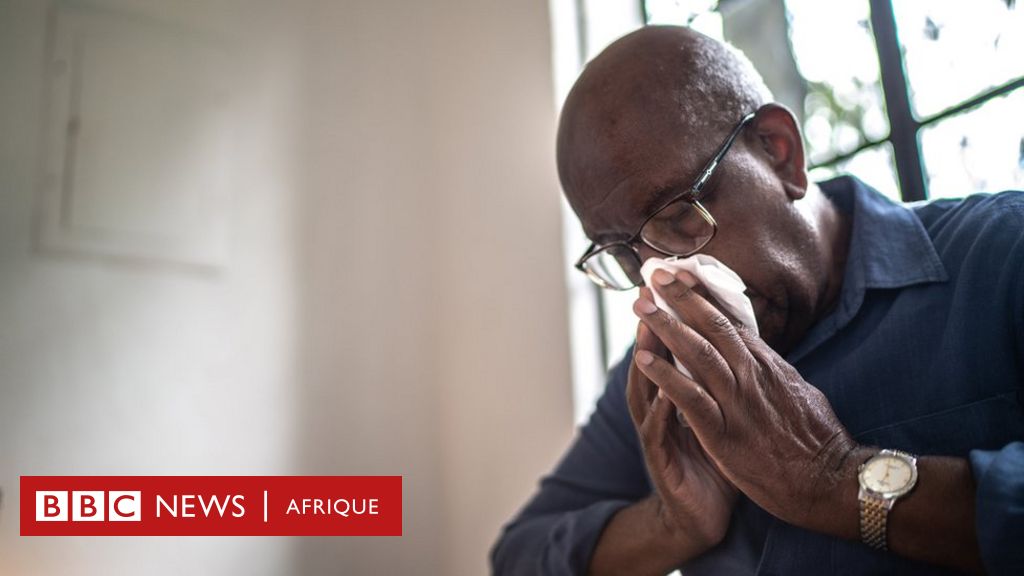- Priscila Carvalho
- Rio de Janeiro, BBC
—
28 minutes ago
Photo credit, Getty Images
—
–
Due to dry weather, increased soot in the air, sudden drops in temperature and increase in pollutants, allergies tend to show up frequently and trigger problems such as rhinitis, sinusitis, bronchitis and other respiratory tract infections.
–
The appearance of these ailments are caused by viral ailments, which increase significantly with cold.
–
“A cold spell, where people are already sensitized beforehand, close the windows and become more confined, increases the viral crises, and the patient’s symptomatology ends up being more important”, underlines Marco Cesar, otorhinolaryngologist at the university hospital of Cajuru, Brazil.
–
But how to tell the difference between all these diseases and find the right treatment? Normally, the symptoms are very distinct and some signs can be noticed from the first days of discomfort.
–
Below we list the main inflammations and how to recognize them:
–
Rhinitis
Considered an inflammatory disease of the nose, which causes symptoms such as nasal obstruction, runny nose and internal itching, it can be caused by several factors.
–
When it is in an allergic form, contact with dust, animal hair and dust mites increases the risk.
–
In non-allergic cases, senile or vasomotor rhinitis can be observed, which is manifested by a change in saliva.
–
This phenomenon is more common in the elderly and can lead to frequent discharge from the nostrils.
–
There is also rhinitis medicamentosa, which is caused by the frequent use of drugs in the nose.
–
“It’s a chemical and psychological addiction, and the person keeps using it,” says Cesar, who is also a nose surgeon and a member of the American Rhinologic Society.
–
There is also a chemical rhinitis, with the presence of a lot of secretions. In general, it comes from a case of flu and also temperature variations.
–
To treat inflammation, the best way is to prevent the causes of the disease.
–
In the case of allergic rhinitis, the ideal is to control and sanitize the environment, in addition to the use of antiallergic drugs and nasal sprays with drugs, if the doctor requests it.
–
When the disease is caused by bacteria, the use of antibiotics is recommended, under the guidance of the healthcare professional.
–

Photo credit, Getty Images
—
Rhinitis and sinusitis lead to nasal obstruction.
–
Sinusitis
It is an inflammation of the sinuses of the face, which usually affects a person’s quality of life. It can be caused by bacteria, viruses and also by rhinitis.
–
“Inflammation of the nasosinus mucosa inhibits the movement of its specialized cells responsible for pushing mucus down the throat,” says Raul Zanini, an otolaryngologist at Albert Einstein Hospital, Brazil.
–
Because of this, sinusitis causes obstruction of the nose, thick secretions, discharge, pressure pain (which can radiate to the teeth), a decrease in taste and smell. In babies, it triggers feeding difficulties and poor nutrition.
–
The condition can manifest itself at any time of life, but it is more common with sudden changes in temperature and weather conditions with low relative humidity.
–
Active and passive smoking, as well as particles in the air due to pollution, also promote inflammation.
–
There are also anatomical alterations inside the nose such as deviated nasal septum, polyps, and increased nasal turbinates (known as spongy meat) that increase susceptibility to sinusitis.
–
The treatment recommended by doctors can consist of the use of antibiotics, but it can also be done with a saline solution.
–
The latter relieves the symptoms and accelerates the recovery of the mucociliary, which acts on the defense mechanism of the respiratory tract. Inhalations, also with saline solution, can facilitate the removal of secretions from the sinuses of the face.
–
In more serious and recurrent cases, surgery with a specialized professional is necessary.
–
Bronchitis
This is an inflammatory disease of the lung bronchi of a viral or bacterial nature.
–
It is important not to confuse it with asthma, which is also a respiratory condition, but has different symptoms and is triggered by an allergic process.
–
In acute bronchitis, the patient presents with a lot of catarrh, coughing, a full chest, and children are most affected.
–
It is also more frequent in case of strong temperature drops.
–
When the disease is viral, fever medications, nebulizations, respiratory physiotherapy and plenty of fluids are recommended.
–
“When it’s bacterial, antibiotics are recommended,” says Débora Carla Chong, a pediatric pulmonologist and professor at the Faculty of Medicine at the Pontifical Catholic University of Paraná, Brazil.
–
Pharyngitis

Photo credit, Getty Images
—
Pharyngitis can be of viral or bacterial origin.
–
This is the famous sore throat and it is very common in patients who have a nasal obstruction or who sleep with their mouth open. Usually, when they wake up in the morning, they feel very uncomfortable.
–
Besides this symptom, the person may have a headache when waking up.
–
Pharyngitis can also be viral, which is common when sleeping with wet hair, feeling calm, or walking barefoot.
–
They can also be bacterial, caused by the species streptococcus pyogenes. In this case, it is a sudden condition, common in children from the age of two.
–
“Untreated, the inflammation can progress to rheumatic fever, an autoimmune reaction that affects the joints, and can affect the heart and, in severe cases, the brain,” adds the pulmonologist.
–
Treatment should be done with antibiotics, under medical guidance.
–
Otite
This type of inflammation is characterized by pain in the ear and discomfort in the area. Infection can be caused by viruses after a cold.
–
Ear infections are also recurrent in children and can be triggered during breastfeeding. When milk spits up, it goes into the middle ear and can cause inflammation.
–
“It’s a child’s first infection and it occurs in the age group of six to three years,” says Ms Chong.
–
The most common symptoms are severe pain in the ear, fever, loss of appetite and local discharge. The most appropriate treatment is the use of antibiotics and analgesics, under medical supervision.
–
Finally, there is still the inflammation caused by the increase in the adenoid, a lymphatic organ located behind the nasal cavities and above the palate.
–
It impairs “communication” with the ear and nose and causes a lot of phlegm in the area.
–
Treatment can be with medication and, in more severe cases, with surgery to remove the secretions, as directed by the healthcare professional.
—


